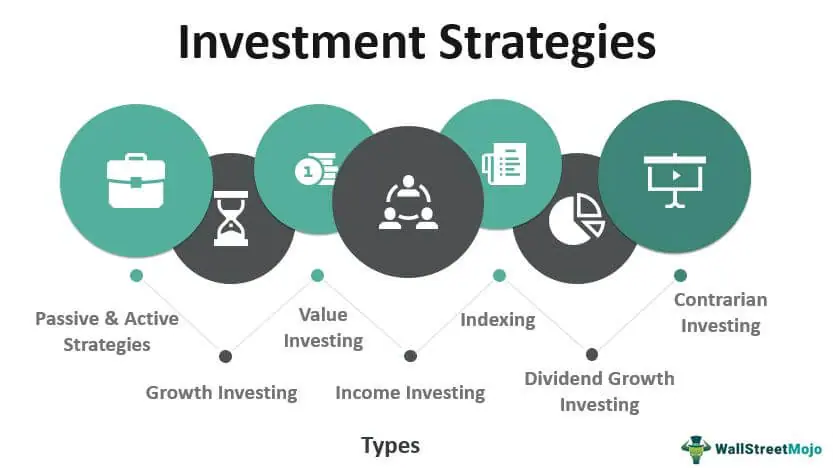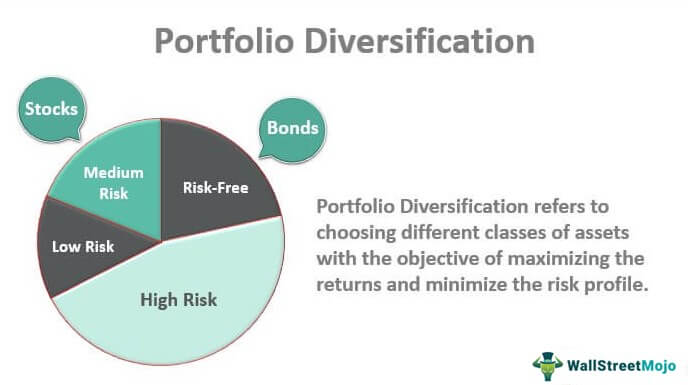Are you a savvy investor looking to make your money work harder? If so, then the “best investing strategies” are key to helping you build an impressive portfolio and secure a safe financial future. Investment can be complicated, but with the right strategies, anyone can become a successful investor.
The good news is that there are plenty of options out there for people at all levels of experience – regardless of whether you’re just starting or have advanced knowledge in the area. Whether it’s stocks, bonds, or mutual funds, each different type of investment has its benefits and risks that need to be considered. By understanding these points before diving into any market, one can better protect themselves against potential losses while also increasing their chances of success. Here are some tips for getting started when it comes to finding the best investing strategies:
Understand the Different Types Of Investing Strategies
When you invest, your money can grow over time. But there are so many investment methods out there that it can be hard to pick the best one for your goals and level of comfort with risk. Let’s know the different types of investment strategies, such as either active or inactive methods:
- Growth investing
- Value investing
- Income investing
- Dividend growth investing
- Contrarian investing and Indexing are the key to deciding which one works best for you.
Passive and active strategies are two of the most popular investment approaches. Passive strategies involve investing in a diversified portfolio of assets and holding them for an extended period without regularly buying and selling them. This approach is ideal for investors who prefer a low-maintenance, hands-off strategy that is unlikely to require ongoing investment in research or analysis. On the other hand, active investing is more hands-on and involves choosing investments based on things like the current state of the market and other things. It may take more time and work to use this approach, but it could pay off in the long run.

Another popular investment strategy is growth investing, which aims to maximize returns by investing in companies with strong growth potential. Short-term investments in growth stocks can be high-risk and high-reward, while long-term investments in growth stocks can lead to significant gains over time. Value investing, meanwhile, is an investment strategy that involves buying undervalued stocks and holding them until their value increases. This approach requires a deep understanding of company fundamentals and the ability to spot undervalued stocks before the market does.
- For investors looking for more consistent returns, income investing, and dividend growth investing are two strategies worth considering.
- Income investing involves investing in fixed-income securities like bonds or high-dividend stocks, which provide regular streams of income for investors.
- Dividend growth investing involves investing in companies that regularly increase their dividend payouts, providing both income and potential capital appreciation over time.
- Contrarian investing involves going against market sentiment and investing in companies that are undervalued or unpopular among other investors.
- Additionally, indexing is a way to trade that includes following the general success of a market index, such as the S&P 500, by buying a variety of stocks that are similar to the index. This strategy is low-cost and low-maintenance, making it a popular choice for many investors.
In conclusion, understanding the various types of investing strategies can help you determine which one is best for your goals and risk tolerance. Whether you prefer a hands-on, active approach or a low-maintenance, passive strategy, there is an investment strategy out there that can help you grow your wealth over time. By conducting diligent research and seeking expert advice, you can confidently select the best investing strategies that align with your financial goals.
Read and learn more tactical ways to become a successful Amazon product reviewer.
Investment Objectives And Risk Tolerance Should Be Considered
Before making any investment decisions, it is critical to consider your investment objectives and risk tolerance. Your risk tolerance refers to how much volatility or loss you are willing to endure in the quest for higher returns. It is important to assess your risk tolerance level carefully before investing your hard-earned money.
- One of the best investing strategies for success is to first think about what you want to achieve with your money. Think about what you want to get out of your investments – whether it is long-term growth, short-term income, or a combination of both.
- Knowing your investment goals will help you decide on the types of investments that are appropriate for you. For instance, if you are investing for retirement, you may be willing to take on more risk than someone who is saving for a short-term goal, such as a down payment on a house.
Once you have defined your investment goals, it is essential to assess your risk tolerance. There are three main categories of risk tolerance – aggressive, moderate, and conservative. Aggressive investors are willing to take on more risk to achieve higher returns, while conservative investors prefer lower-risk investments with a lower potential for loss. Moderate investors fall somewhere in between. Understanding your risk tolerance and choosing the appropriate investment strategy is vital to achieving your investment goals. In the end, the best investing strategies are the ones that align with your investment goals and risk tolerance level.
Research Potential Investments Thoroughly
When it comes to investing, research is the key to success. If you’re looking to find the best investing strategies, it’s important to take the time to research potential investments thoroughly. This means doing your due diligence on the company and industry, diving into the financials, analyzing the management team, understanding the competitive landscape, considering the risks, and determining your valuation.
Researching the company and industry you’re considering investing in is crucial. You need to have a deep understanding of the market and the company’s position within it. This includes analyzing the competition, market trends, and any regulatory concerns that may impact the industry. From there, you can dive into the company’s financials, looking at revenue growth, profit margins, and any potential risks that may impact the company’s performance.
Once you have a solid understanding of the company and industry, it’s time to analyze the management team. You want to make sure that they have the experience and expertise needed to lead the company to success. Look at the CEO’s track record, the experience of the executive team, and any board members who may have a role in decision-making. Ultimately, the success of the company will depend on the quality of the management team. By following these best investing strategies, you’ll be one step closer to finding success in the world of investing.
Develop A Diversified Portfolio To Manage Risk
Developing a diversified portfolio is one of the best investing strategies to manage risk. By spreading your wealth across a variety of asset classes and sectors, you can minimize the impact of any single investment decline and protect yourself from market fluctuations. Additionally, diversification can help you maximize your returns and achieve long-term financial goals.

Spread your investments across different types of assets, like stocks bonds, and alternative investments like real estate or commodities. This can help you make your portfolio more diverse. Each asset class has its own unique risk and return profile, so investing in a mix of them can help you balance out potential losses. For example, while stocks may offer higher potential returns, bonds provide greater stability and lower risk. By including both in your portfolio, you can achieve a better overall balance.
- Another way to diversify is to invest across different sectors. This means allocating your assets across different industries, such as technology, healthcare, consumer goods, or energy. By doing so, you can reduce the risk of a single company or industry-related downturn significantly impacting your portfolio.
- Also, it’s important to keep an eye on your investments and make changes as needed to keep them diversified. For example, if one asset class or sector is outperforming others, you may need to adjust your portfolio to avoid becoming over-reliant on a single investment. Staying vigilant and making timely adjustments can greatly enhance your portfolio’s performance.
In conclusion, developing a diversified portfolio is one of the best investing strategies to manage risk. In addition, the secret is to diversify your holdings across different asset classes and industries, keep a close eye on your portfolio, and tweak it as necessary. With this approach, you can protect your wealth from market fluctuations, maximize your returns, and achieve long-term financial goals.
Take Advantage Of Tax Benefits When Possible
It’s important to take advantage of all the available tax benefits when possible. By using these benefits, you can save money on your taxes and potentially increase your finances. A few examples of popular tax breaks include credits, exclusions, deductions, and shelters. Deductions, for example, allow you to subtract certain expenses from your taxable income, while credits reduce your tax liability on a dollar-for-dollar basis.
Exclusions, on the other hand, exclude certain types of income from taxation altogether. Shelters are tactics designed to protect your income from taxes, such as setting up a tax-deferred retirement account.
- One of the best investing strategies is to take full advantage of tax benefits. For example, contributing to a tax-deferred 401(k) can help you reduce your taxable income and save for retirement at the same time.
- Similarly, investing in a health savings account (HSA) can help you save money on healthcare expenses and reduce your taxable income. To be eligible for these tax breaks, you must fulfill certain criteria, including income limitations, filing status, and dependent status.
- Furthermore, to guarantee your eligibility for such advantages, it is essential to be current with the most recent tax rules and regulations. There are numerous resources available to help you understand these tax laws and benefits, such as tax software, tax professionals, and government websites. By investing in these resources, you can take full advantage of tax benefits and secure your financial future.
- In addition, don’t forget about the importance of record-keeping when it comes to tax benefits. Keeping accurate records of your expenses and income can help you maximize your tax deductions and credits. This is especially true for self-employed individuals who may be eligible for tax deductions such as home office expenses and vehicle expenses.
Make sure that you keep detailed records of your expenses, including receipts and documentation, so you can use these records to support your tax deductions. In summary, taking advantage of tax benefits is an important part of any investment strategy. By researching available tax benefits and staying within the guidelines set forth by the government, you can maximize your savings and increase your financial security.
Utilize Professional Investment Advice When Needed
When it comes to making investments, it’s important to have a good understanding of the market and the individual assets you are considering. However, there are times when even the most seasoned investor can benefit from the assistance of a professional financial advisor.
Hiring an advisor can provide you with access to the best investing strategies, taking into account your unique financial situation and goals. Whether you’re just starting in the world of investing or looking to make a major financial decision, utilizing professional investment advice can help you make confident and informed choices.
One of the biggest advantages of working with a financial advisor is that they can help you avoid costly mistakes. While it may be tempting to handle your investments, a lack of experience or knowledge can lead to poor decisions that could potentially damage your financial future.
- An experienced advisor can help you navigate the complex investment landscape, providing you with personalized advice and recommendations that can help you achieve your financial goals.
- By utilizing the best investing strategies, you can minimize risk and maximize returns, helping you to build long-term wealth.
- Another key benefit of hiring a financial advisor is that they can help you create a customized plan for your unique financial situation.
- By taking into account factors such as your income, expenses, and long-term goals, an advisor can develop a plan that is tailored to your specific needs. This can include recommendations for asset allocation, tax planning, and retirement savings, all of which can help you achieve your financial goals.
- Working with an advisor can also provide you with peace of mind, knowing that you have a trusted professional on your side who is committed to helping you make the best possible decisions for your financial future.
In summary, while there are many ways to approach investing, working with a professional financial advisor can provide you with access to the best investing strategies and personalized advice and recommendations. Whether you’re just starting or looking to make major financial decisions, an advisor can help you avoid costly mistakes and create a customized plan for your unique financial situation. By utilizing the expertise of a qualified advisor, you can make confident and informed decisions that can help you achieve your financial goals and build long-term wealth.
Monitor Your Investments Regularly For Performance And Adjustments As Needed
One of the best ways to reach your financial objectives is to invest in the growth of your money. But there are hazards involved with investing, so you need to keep an eye on your money to make sure it’s doing what you want it to. By keeping a close eye on your investments, you can identify problems early on and make adjustments as needed.
- One of the best investing strategies is to create a spreadsheet to track your investments. This will help you keep all your information in one place and make it easier to monitor your returns.
- Additionally, you should factor in transaction fees when calculating your returns and consider the impact of taxes on your investment performance. By factoring in these costs, you’ll have a more accurate picture of how your investments are performing.
- Another important factor to consider when monitoring your investments is inflation. Inflation can significantly impact your returns over time, reducing the purchasing power of your investments.
- By taking into account the effects of inflation, you can accurately track your investment growth and evaluate how well your investments are performing against the overall market.
It’s also important to regularly compare your investment returns over several years. This will help you identify trends and patterns and assess how well your investments are performing over time, as well as how they behave in different market environments. Rebalancing your portfolio as needed is another key investing strategy to help minimize your risks and optimize your returns.
Conclusion Of The Best Investing Strategies To Secure Your Future
In conclusion, monitoring your investments regularly and making adjustments as needed is crucial to ensure your investments are performing as expected. By implementing the best investing strategies, you can make informed decisions and achieve your financial goals over the long term.




